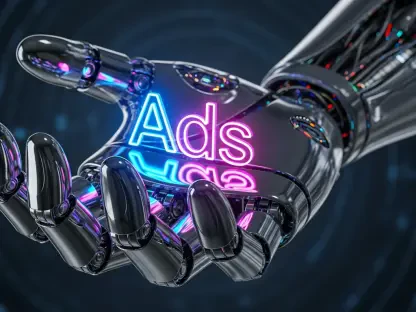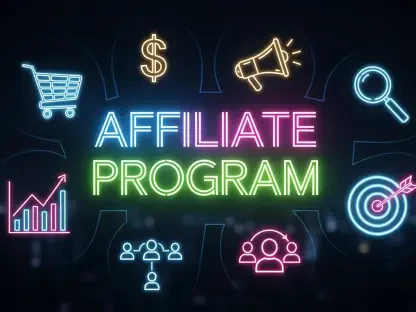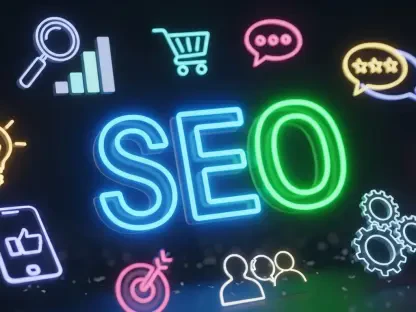Imagine a digital advertising landscape where a conversational AI tool, used by millions weekly, transforms into a powerhouse ad platform capable of autonomously managing campaigns with pinpoint precision. This is the vision driving OpenAI’s strategic pivot with ChatGPT, a technology initially celebrated for its natural language prowess, now poised to redefine how brands connect with audiences. With a reported user base of 700 million weekly active users, the potential for targeted, AI-driven advertising is staggering, promising a seismic shift in the industry.
This review dives into the technological underpinnings and strategic maneuvers behind ChatGPT’s evolution into an advertising platform. It examines the core features under development, the broader industry trends shaping this transition, and the challenges that lie ahead. By exploring OpenAI’s ambitious roadmap, this analysis aims to uncover whether ChatGPT can truly carve out a competitive edge in the crowded digital ad space.
Core Features and Technical Innovations
Building an In-House Paid Marketing Ecosystem
OpenAI is laying the foundation for a robust advertising infrastructure within ChatGPT, focusing on tools that enable seamless ad platform integration. Recent job listings for roles like Growth Paid Marketing Platform Engineer reveal a push to develop systems for campaign management, real-time attribution, and experimentation frameworks. These components are designed to optimize advertising spend, ensuring measurable outcomes for brands looking to tap into ChatGPT’s vast audience.
At the heart of this ecosystem are APIs, data pipelines, and reporting mechanisms that promise efficiency and transparency. Such technical groundwork suggests a commitment to creating a scalable ad platform where advertisers can track performance with precision. This infrastructure aims to bridge the gap between ChatGPT’s conversational roots and the demands of a modern paid marketing channel.
The significance of these developments lies in their potential to streamline the advertising process. By embedding sophisticated tracking and optimization tools directly into the platform, OpenAI is positioning ChatGPT as a one-stop solution for digital marketers. This could reduce reliance on external systems, offering a more integrated experience for campaign execution.
Autonomous Campaign Management Potential
One of the most intriguing prospects of ChatGPT as an ad platform is its capacity for autonomous ad planning and buying. Leveraging AI, the system could allow brands to define specific goals, after which it independently handles everything from strategy formulation to execution. This level of automation stands to differentiate ChatGPT from traditional ad networks that often require significant manual oversight.
Such a feature could revolutionize personalization in advertising, tailoring campaigns to individual user behaviors and preferences at scale. Imagine a scenario where the platform dynamically adjusts ad placements based on real-time engagement data, maximizing impact without human intervention. This capability hinges on ChatGPT’s advanced language models, which could interpret nuanced marketing objectives with remarkable accuracy.
While still in conceptual stages, this autonomous functionality signals a future where efficiency drives ad spend. For advertisers, the appeal lies in reducing operational overhead while achieving highly targeted outreach. If realized, this could position ChatGPT as a trailblazer in AI-driven marketing solutions, setting a new benchmark for the industry.
Industry Context and Strategic Positioning
The digital advertising sector is increasingly leaning toward AI integration, with platforms harnessing machine learning to enhance targeting and automation. OpenAI’s plans for ChatGPT align closely with this trend, as the company seeks to capitalize on its technological edge to offer data-driven advertising solutions. This move reflects a broader industry shift toward smarter, more adaptive marketing tools that prioritize user relevance.
Evidence of high-level commitment comes from leadership initiatives, such as Fidji Simo, OpenAI’s chief of applications, spearheading the search for a dedicated ad team leader. This strategic hire underscores a long-term vision to build a competitive paid media channel within ChatGPT. It signals to the market that OpenAI is serious about challenging established players with a unique, AI-powered offering.
Competing in a landscape dominated by giants like Google and Meta presents a formidable hurdle, yet ChatGPT’s entry could disrupt the status quo. With its massive user base and potential for hyper-personalized ads, the platform might attract advertisers seeking fresh avenues to engage audiences. This competitive dynamic highlights OpenAI’s intent to not just participate but to innovate within the digital ad arena.
Market Applications and Audience Reach
ChatGPT’s reported 700 million weekly users represent an unparalleled opportunity for brands to access a diverse, global audience. As a potential ad platform, it could serve as a unique channel for targeted advertising, particularly if plans to introduce ads for free users by 2026 come to fruition. This vast reach positions ChatGPT as a compelling option for marketers aiming to amplify visibility.
Specific industries, such as e-commerce and technology, stand to gain significantly from ChatGPT’s personalized ad delivery capabilities. For instance, online retailers could leverage the platform to serve tailored product recommendations during user interactions, driving conversions with minimal friction. Similarly, tech firms might use it to promote software solutions to a highly engaged, tech-savvy demographic.
Beyond these sectors, the platform’s conversational nature opens up novel advertising formats, such as contextually embedded promotions within chat exchanges. This could create a less intrusive ad experience, blending seamlessly with user interactions. For advertisers, tapping into such innovative methods could redefine how brand messages resonate with consumers on a massive scale.
Development Hurdles and Market Challenges
Despite the promise, ChatGPT’s journey to becoming a full-fledged ad platform remains in its infancy, with significant technical complexities to overcome. Building a robust infrastructure from the ground up involves integrating sophisticated systems that can handle high-volume ad transactions without compromising user experience. This task demands substantial resources and expertise, posing a steep development curve.
Convincing advertisers to divert budgets from proven platforms to an untested channel presents another obstacle. Established ad networks offer familiarity and predictable outcomes, whereas ChatGPT’s nascent system carries inherent risks. OpenAI must demonstrate tangible value—through superior targeting or cost efficiency—to sway marketing decision-makers in a highly competitive space.
User reception adds another layer of uncertainty, particularly concerning privacy implications. Introducing ads into a platform originally designed for conversational utility could spark backlash if not handled with transparency. Balancing monetization goals with user trust will be critical to ensuring ChatGPT’s ad platform gains acceptance without alienating its core audience.
Future Trajectory in the Ad Tech Space
Looking ahead, ChatGPT’s advertising ambitions are slated to mature over the next couple of years, with a tentative timeline for ad integration around 2026. This window allows OpenAI to refine its technical framework and address early-stage limitations. If successful, the platform could emerge as a formidable player, leveraging its AI capabilities to offer unmatched campaign precision.
Potential breakthroughs, such as fully autonomous campaign management, could set a new standard for digital marketing efficiency. Envision a system where advertisers input minimal parameters, and ChatGPT optimizes every aspect of the campaign in real time, from creative selection to budget allocation. Such advancements would not only save time but also enhance return on investment for brands.
The long-term impact on the advertising industry could be transformative, fostering increased competition and innovation. As ChatGPT matures, it may inspire other tech firms to integrate AI more deeply into their ad offerings, ultimately benefiting marketers with more effective tools. This ripple effect underscores the platform’s potential to reshape how digital ads are conceptualized and delivered.
Final Thoughts and Next Steps
Reflecting on the journey so far, OpenAI’s efforts to transform ChatGPT into an advertising platform show remarkable ambition, balancing cutting-edge AI with the practical demands of digital marketing. The groundwork laid through strategic hires and technical development points to a clear vision, even as the project grapples with early challenges. The scale of its user base stands as a testament to the untapped potential that awaits advertisers.
Moving forward, the focus should be on accelerating infrastructure development to ensure a seamless ad experience by the projected timeline. OpenAI would benefit from piloting small-scale ad campaigns to gather real-world feedback, refining algorithms based on performance data. Engaging with advertisers early to build trust and demonstrate value could pave the way for broader adoption.
Additionally, prioritizing user privacy through transparent data practices will be essential to maintaining goodwill. As this technology evolves, stakeholders should monitor how ChatGPT’s AI-driven approach influences advertising norms, potentially setting precedents for ethical ad delivery. Keeping an eye on these developments will help brands and marketers prepare for a future where AI plays a central role in connecting with audiences.









